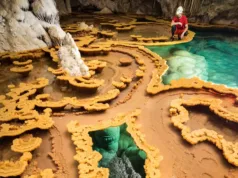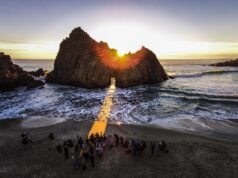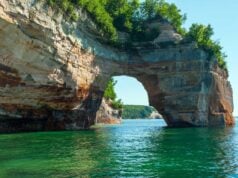Horseshoe Bend is a dramatic, horseshoe-shaped meander of the Colorado River located near the town of Page, Arizona, USA. Situated within the Glen Canyon National Recreation Area, this iconic geological formation has become one of the most photographed and visited landmarks in the American Southwest. Its panoramic views of the river’s winding path and towering cliffs attract nature lovers, photographers, and adventurers from around the world.
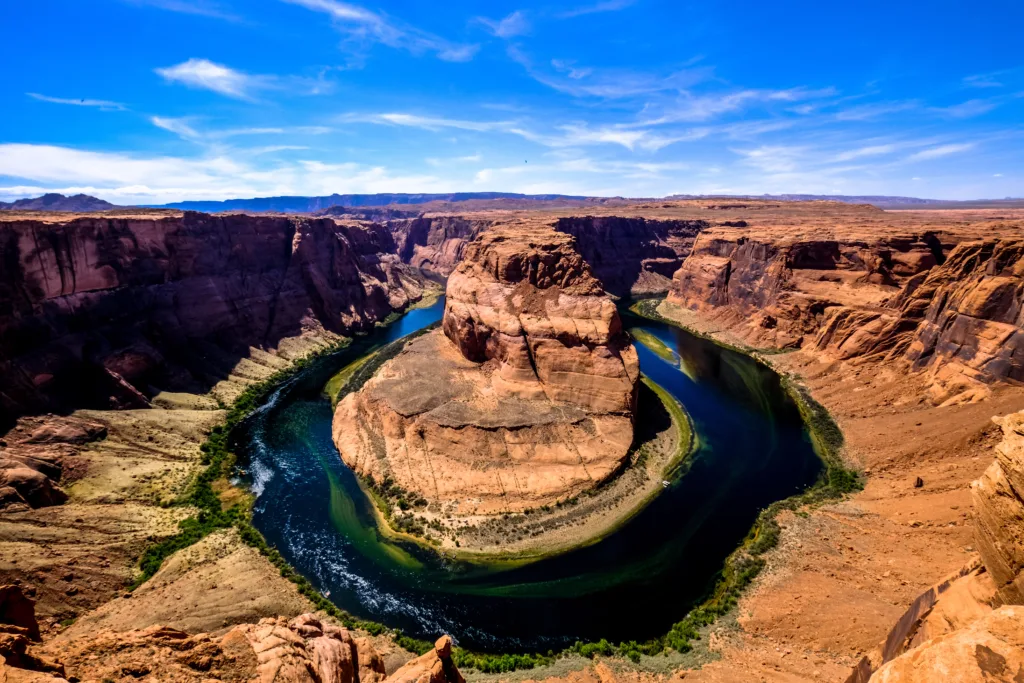
Positioned about 5 miles downstream from the Glen Canyon Dam and Lake Powell, Horseshoe Bend provides a natural amphitheater with a sweeping view of the emerald green waters of the Colorado River, set against red-orange sandstone cliffs. The bend in the river’s path was formed over millions of years by the constant flow of water eroding the landscape, creating this unique circular formation.
Formation and Geological Significance
The creation of Horseshoe Bend, like much of the surrounding landscape, is attributed to a combination of water erosion, geological uplift, and the unique sandstone formations of the region. The process began approximately 5-6 million years ago, during the late Neogene period, when the Colorado River began cutting through the Colorado Plateau.
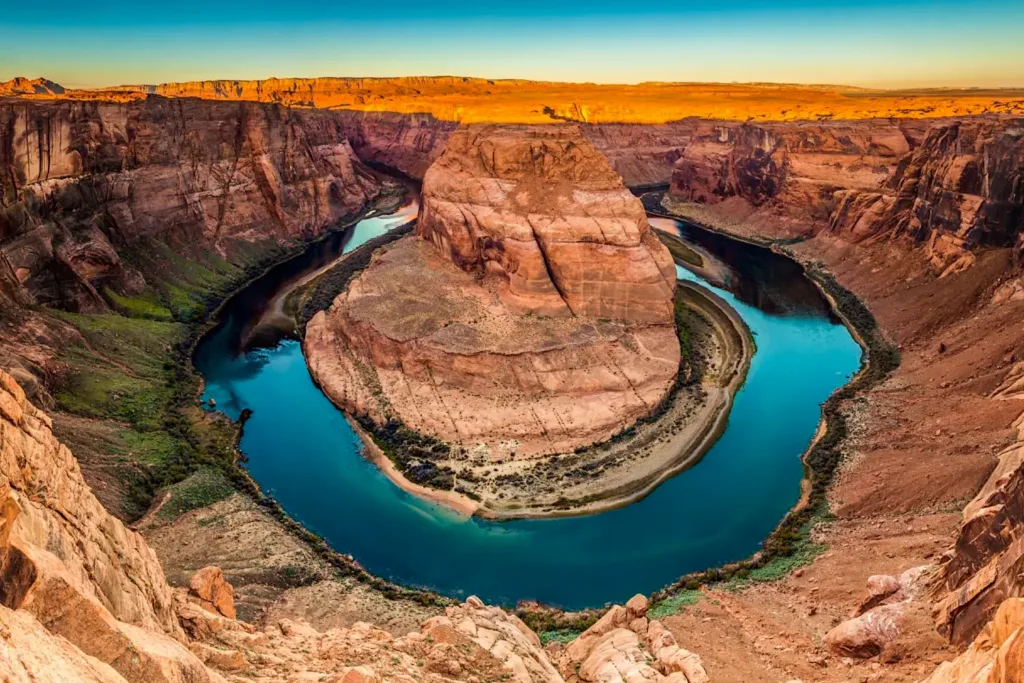
As the river flowed, it sought the path of least resistance, meandering through softer rock layers. Over time, the river cut deeper and wider into the land, creating steep canyon walls. Horseshoe Bend’s towering cliffs, which stand about 1,000 feet (300 meters) above the river, expose distinct layers of Navajo sandstone that date back to the Jurassic period, over 190 million years ago.
This impressive erosion and carving process is ongoing, albeit at a very slow pace. The river continues to shape the land today, although changes occur on a scale too slow to notice during a human lifetime.
Cultural and Historical Context
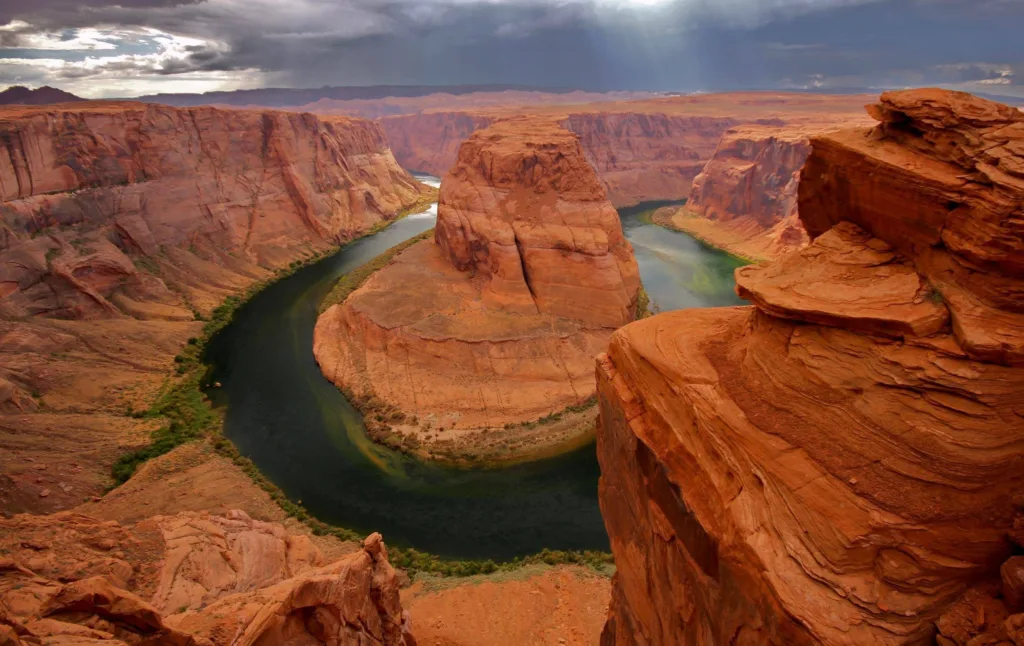
For centuries, the area around Horseshoe Bend and the broader Colorado River region has been inhabited by indigenous peoples, including the Navajo and Ancestral Puebloans. These communities relied on the river for sustenance and developed a deep cultural and spiritual connection to the land and its natural formations. The river itself has long been a lifeline for the indigenous tribes of the Southwest, providing water, transportation routes, and food.
The exploration of the area by European settlers began in the 19th century, and by the 1860s, the first white settlers and explorers, like John Wesley Powell, embarked on expeditions to chart the unknown regions of the Colorado River. Powell’s expeditions played a crucial role in mapping the river’s course and revealing the area’s natural wonders to the outside world, including Glen Canyon and what is now Horseshoe Bend.
Tourism and Accessibility
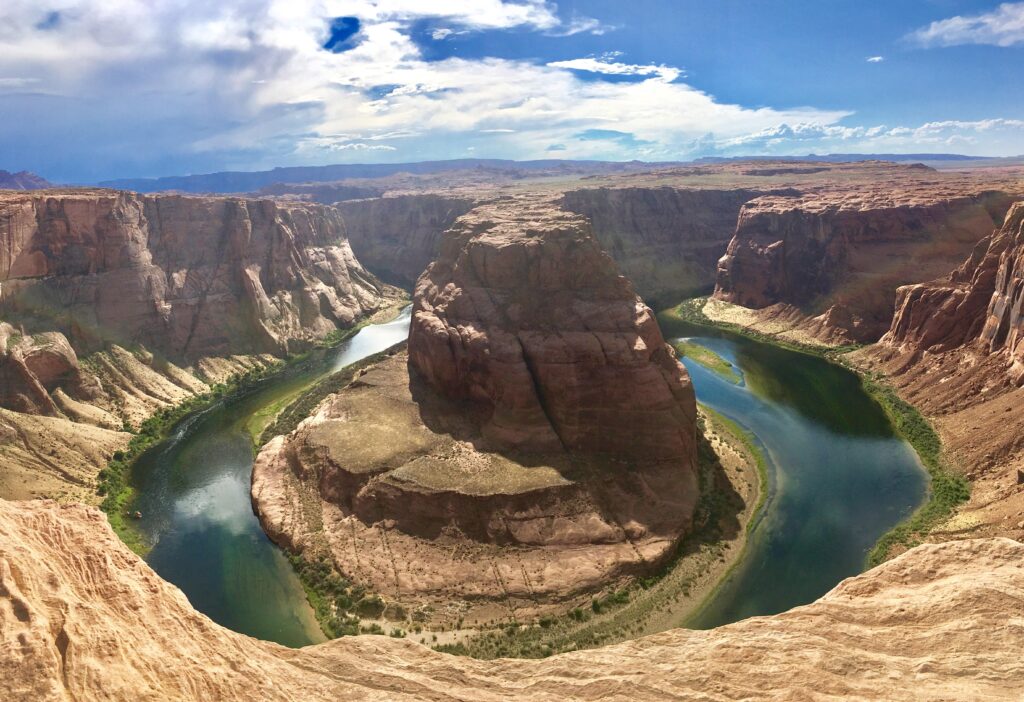
Horseshoe Bend has become a popular stop for tourists visiting the Grand Canyon, Antelope Canyon, and Lake Powell. The attraction is easily accessible from U.S. Route 89, just a short 1.5-mile round-trip hike from the parking lot. Despite the easy access, the view from the overlook is nothing short of breathtaking. At the edge of the cliff, visitors are greeted by a nearly 360-degree view of the river as it snakes through the canyon, making for an unforgettable sight.
The combination of natural beauty and ease of access has made Horseshoe Bend a favorite among photographers, particularly at sunrise and sunset when the light casts striking shadows on the red rock walls. Social media has further amplified its popularity, and it is now a must-see destination for travelers in the region.
In recent years, efforts have been made to improve infrastructure to accommodate the growing number of visitors. The parking lot has been expanded, and there are railings along the most dangerous sections of the cliff, as well as interpretive signs that provide information about the geology and history of the area. Despite these improvements, the majority of the overlook remains natural and unfenced, allowing visitors to experience the dramatic drop firsthand—but also emphasizing the need for caution.
Environmental Concerns
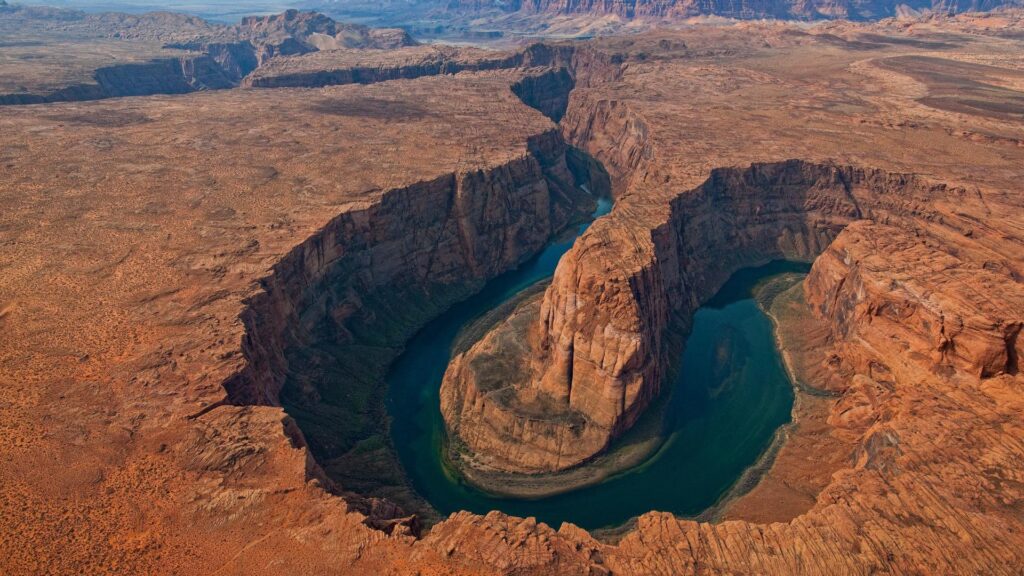
While Horseshoe Bend’s growing popularity is great for tourism, it has also raised concerns about the impact of human activity on the fragile desert ecosystem. Increased foot traffic can lead to erosion and degradation of the land, and the proximity of visitors to the edge poses safety risks. The National Park Service and local authorities have been working together to manage these issues by improving visitor facilities, creating designated viewing areas, and encouraging responsible tourism practices.
The area is also susceptible to the effects of climate change, particularly in the context of the Colorado River, which has been subject to declining water levels due to prolonged drought conditions in the southwestern United States. The health of the river system is vital to the surrounding ecosystems and communities that rely on it for water. Sustainable water management practices and efforts to preserve the river’s flow are crucial for maintaining both the natural beauty of Horseshoe Bend and the wellbeing of the region.
Best Times to Visit
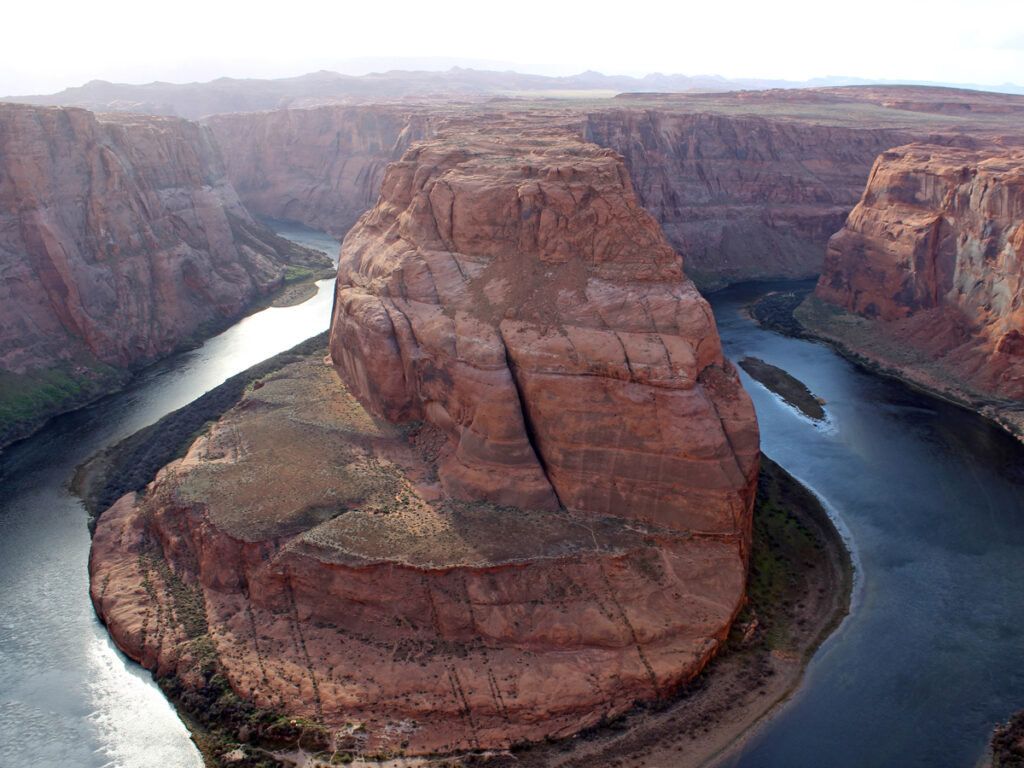
The beauty of Horseshoe Bend can be enjoyed year-round, but the best times to visit are generally in the spring (March to May) and fall (September to November). During these months, temperatures are mild, making the hike to the overlook more pleasant. Summer temperatures in this region can soar above 100°F (38°C), which can make the hike more challenging and potentially dangerous without proper precautions.
Sunrise and sunset are the best times of day for photography, as the golden hour lighting accentuates the warm hues of the sandstone cliffs and provides soft, indirect light on the Colorado River below. For those seeking to avoid crowds, visiting early in the morning or late in the afternoon can provide a more peaceful experience, though Horseshoe Bend is rarely empty due to its popularity.
Nearby Attractions
Horseshoe Bend is situated in a region that boasts a wealth of natural wonders. Visitors often combine their trip to Horseshoe Bend with visits to nearby destinations like:
- Antelope Canyon: A stunning slot canyon located on Navajo land, famous for its wave-like walls and light beams that shine through narrow openings at certain times of the day.
- Lake Powell: One of the largest man-made reservoirs in the United States, offering boating, fishing, and scenic views. It’s formed by the Glen Canyon Dam on the Colorado River.
- Glen Canyon Dam: A major feat of engineering, this dam created Lake Powell and regulates water flow through the Colorado River, providing hydroelectric power to the region.
- Grand Canyon National Park: Located just a few hours away, this world-famous canyon is a natural wonder of the world and a highlight of any Southwest road trip.
Conclusion
Horseshoe Bend is not just a stunning geological feature, but a symbol of the vast beauty and dynamic power of the natural world. Its sweeping views, rich history, and accessibility make it a must-see destination for those traveling through the American Southwest. As efforts to preserve this natural wonder continue, it stands as a testament to the delicate balance between human enjoyment and environmental stewardship. Whether for a moment of awe, a photo opportunity, or an appreciation of Earth’s natural processes, Horseshoe Bend leaves a lasting impression on all who visit.


























